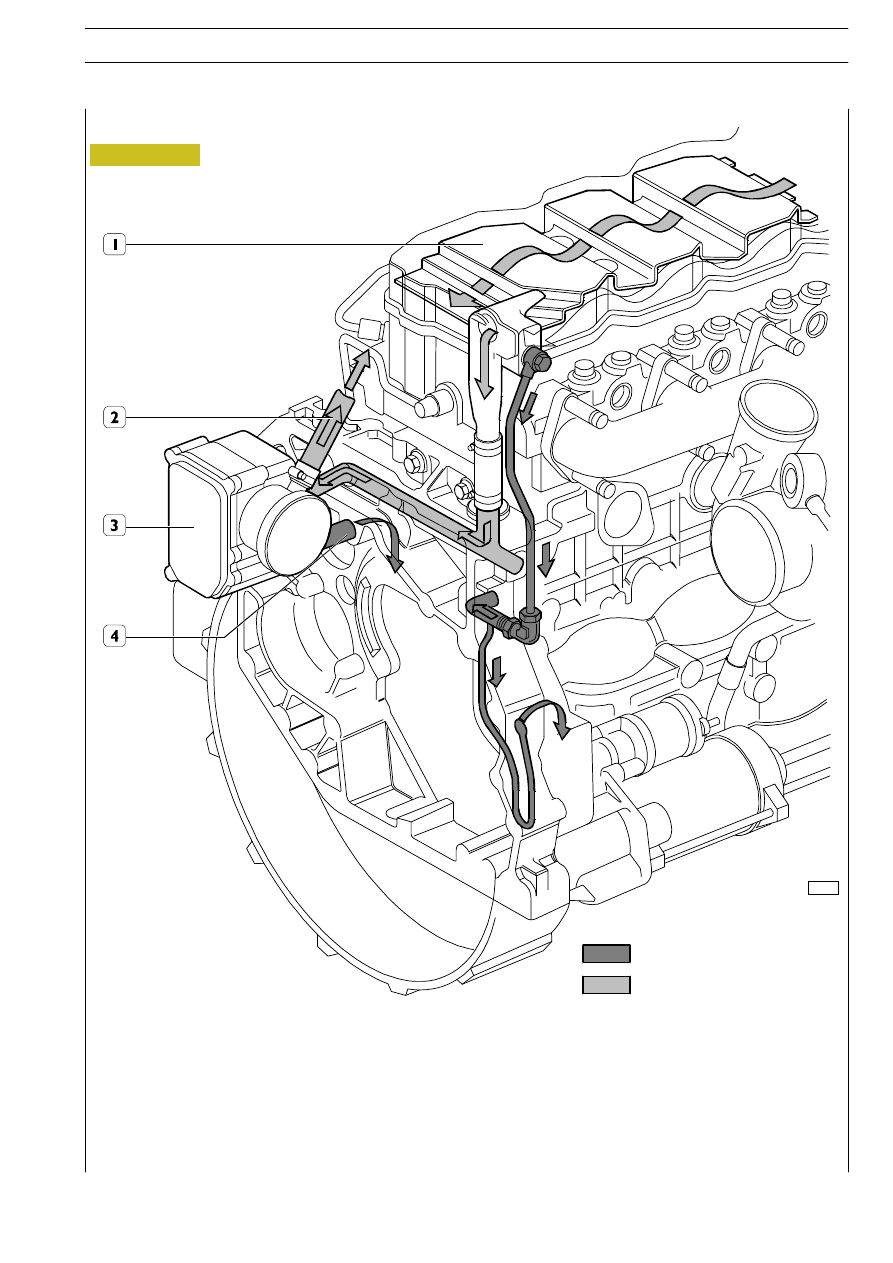Iveco EuroCargo (12 to 26 t). Manual - part 24

70484
Figure 193
540480
Oil vapour recycling
1. Pre-separator - 2. Exhaust to the outside (temporary) - 3. Filter - 4. Return to engine
The tappet cover houses the pre-separator (1), whose shape and position determines an increase in oil vapour outlet speed
and condenses a part of vapours at the same time.
Condensate oil returns to the oil sump whereas the residual vapours are ducted, collected and filtered in the blow-by (3).
In the blow-by (3), part of the vapours condense and return to the oil sump whereas the remaining part is put into cycle again
through pipe (2).
Oil condensate
Oil vapours
E
URO
C
ARGO
T
ECTOR
12-26 t
ENGINE F4 AE 0481
87
Base - February 2003